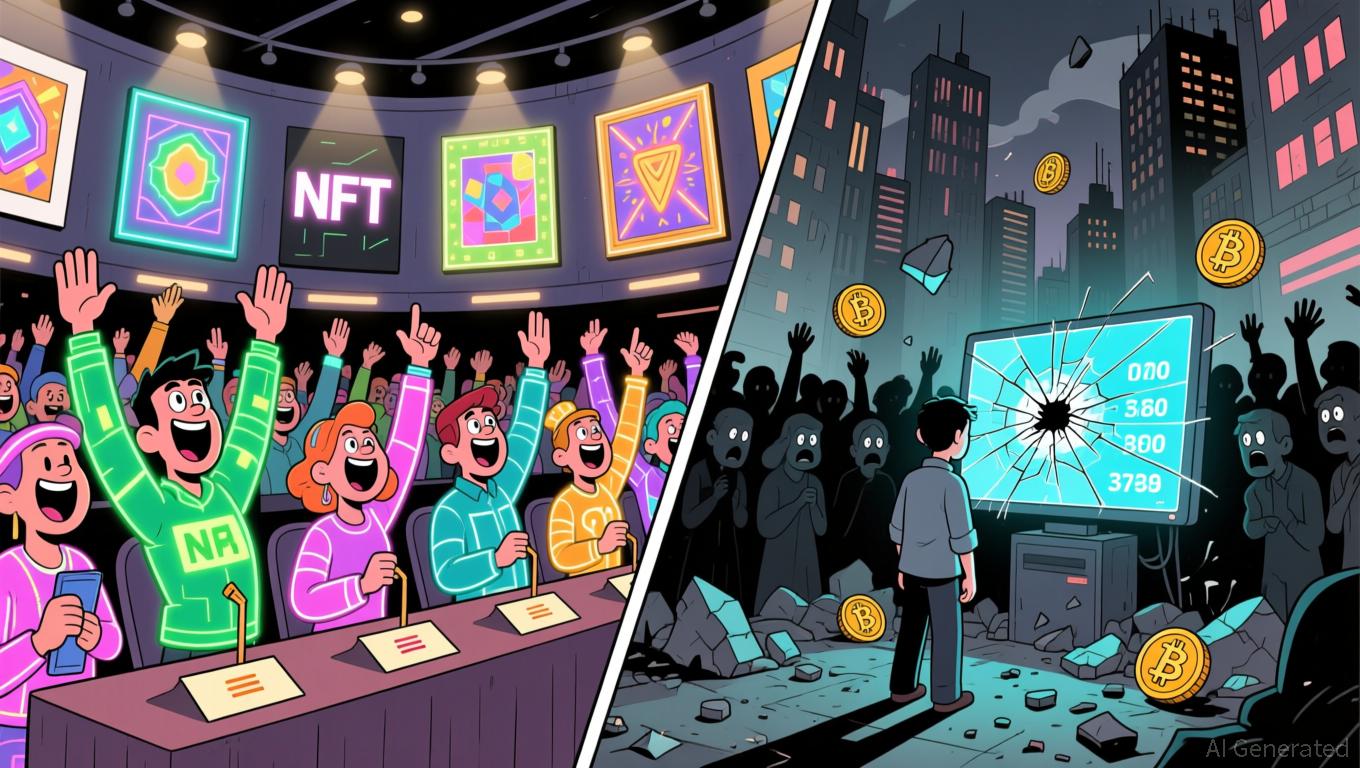The Emergence of Hyperliquid: Ushering in a New Chapter for On-Chain Derivatives Trading?
- Hyperliquid disrupts DeFi with order-book model, capturing 73% DEX market share via $317.6B Q3 2025 volume. - Zero-gas HyperEVM blockchain and HIP-3 fee cuts (up to 90%) drive liquidity growth in equity perps like TSLA/NVDA. - Institutional partnerships (VanEck, StateStreet) and permissionless token auctions accelerate TradFi-DeFi convergence. - 50x leverage perpetuals and $129.9M HYPE/USDC daily volume highlight niche market dominance. - Security risks (e.g., $4.9M POPCAT bad debt) and fee sustainabilit
Structural Advantages: Order-Books vs. AMMs
Hyperliquid’s main breakthrough is its adoption of an order-book framework, which stands in stark contrast to the AMM-based models used by platforms such as Curve or
The platform’s latest HIP-3 Growth Mode initiative demonstrates its focus on deepening liquidity. By
Adoption Drivers: Institutional Partnerships and Token Listings
Hyperliquid’s reach goes well beyond individual traders. Its integration with traditional financial systems, including collaborations with major players like VanEck and StateStreet, points to increasing institutional involvement
Furthermore, Hyperliquid’s method for listing tokens has become a significant growth catalyst. The platform introduces a new token roughly every 31 hours through a permissionless auction, with slots awarded to the highest bidders. For example, the
Hyperliquid’s derivatives offerings further boost its value proposition.
Risks and Challenges
Despite its impressive growth, Hyperliquid is not without risks. The $4.9 million loss tied to the Solana-based token POPCAT in 2025
Additionally, the long-term viability of the HIP-3 Growth Mode’s fee cuts remains in question. While lower fees attract more liquidity, they may also squeeze profit margins, requiring careful management to balance expansion with financial sustainability.
Conclusion: A Paradigm Shift or a Passing Trend?
With its order-book system, attractive fee policies, and institutional collaborations, Hyperliquid has established itself as a strong contender in the on-chain derivatives arena. However, its future will hinge on how well it can address security issues and sustain liquidity through changing market conditions. For investors, Hyperliquid stands as a notable example of DeFi innovation, merging the effectiveness of traditional order books with the open nature of blockchain technology.
As DeFi continues to develop, Hyperliquid’s capacity to respond to regulatory demands and technological shifts will ultimately decide whether it represents a lasting transformation or just a temporary disruption.
Disclaimer: The content of this article solely reflects the author's opinion and does not represent the platform in any capacity. This article is not intended to serve as a reference for making investment decisions.
You may also like
Ethereum Updates Today: NFT Conundrum: Rising Number of Buyers Contrasts With Sharp Drop in Sales During Crypto Turmoil
- NFT buyer participation surged 77% to 293,459 in Nov 2025, but sales volumes fell 4.97% to $72.53M, reflecting crypto market turbulence. - Bitcoin dropped below $84,000 and Ethereum fell to $2,785, dragging total crypto market cap down $390B amid macroeconomic pressures. - Analysts attribute the buyer-seller imbalance to investors shifting to safer assets, with NFTs bearing the brunt of leverage unwinds. - Projects like RaveGods and The Lost Tesla Art Car Project aim to redefine NFT utility through real-

Bitcoin News Update: Bitcoin ETFs See $3 Billion Outflow Amid Market Uncertainty and Death Cross Triggered Sell-Off
- Bitcoin ETFs lost $3B in November, with BlackRock's IBIT recording a record $523M single-day outflow amid macroeconomic uncertainty and bearish technical signals. - Bitcoin's price fell below $90K for first time since April, pushing ETF investors underwater as Fed's December rate cut odds dropped below 50% and a "death cross" deepened caution. - Options markets show $2.05B in $80K strike put open interest, while crypto miners face losses as outflows shift capital to altcoins like Solana and XRP . - Analy

Bitcoin News Update: Japan’s Calculated Crypto Initiatives Propel the Country Toward Global Leadership in Digital Assets
- Japan's strategic crypto moves, including SoftBank-PayPay-Binance Japan partnership, aim to boost retail access and institutional confidence. - FSA's reclassification of 105 cryptocurrencies as financial products signals tighter oversight, potentially attracting global capital. - Diplomatic tensions with China, fueled by PM Takaichi's Taiwan remarks, risk indirect impacts on investor sentiment and economic stability. - Bitcoin's recent dip below $90,000 spurs altcoin presales (Bitcoin Munari, XRP Tundra)

Solana Updates Today: The Crypto Dilemma—Solana ETFs Compared to Apeing's Presale Momentum
- Solana (SOL) faces mixed signals: ETF inflows ($476M since Oct 28) contrast with declining futures open interest ($7.2B vs $17B peak), raising breakdown risks below $130. - Avalanche (AVAX) shows muted 5.47% growth projections, diverting capital to high-risk presales like Apeing, which targets $0.001 listing price from $0.0001 with audit-first structure. - Apeing's presale attracts speculative traders seeking explosive returns, leveraging low entry barriers and social media hype amid bearish pressures on
